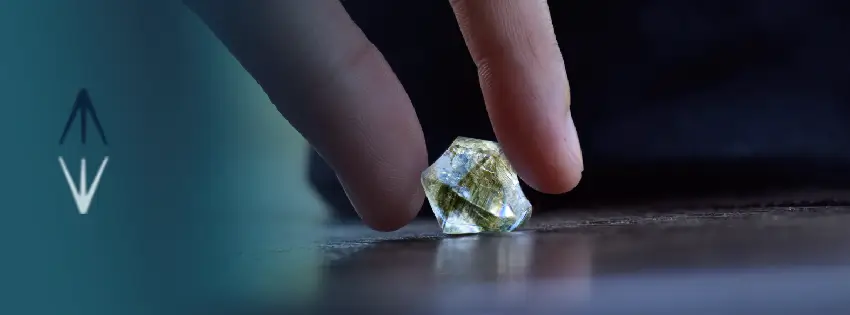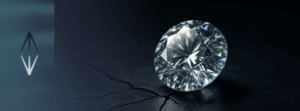The value of a diamond is a combination of beauty, rarity, and science. At diamantes.com, we understand the importance of knowing the elements that directly affect its price, especially when making an investment or choosing a meaningful piece of jewelry. In this article, you’ll discover the essential factors that determine a diamond’s price and how to assess its true quality.
What factors determine the price of a diamond?
The 4 C’s of diamonds
The gemological industry uses four fundamental criteria known as the 4 C’s to classify and value diamonds: carat, color, clarity, and cut.
Carat (Weight)
Carat measures the weight of a diamond, with one carat equivalent to 200 milligrams. Although higher carat weight generally means a higher price, this increase is not linear. A 2-carat diamond may be worth significantly more than two 1-carat diamonds due to its rarity.
Color
Diamonds are valued for their lack of color. The GIA scale ranges from D (colorless) to Z (light yellow or brown). The more colorless a diamond is, the higher its price, as the purity of color enhances its brilliance.
Clarity
Clarity evaluates internal imperfections (inclusions) and external ones (blemishes). A diamond with no visible inclusions under magnification is more valuable. Categories range from FL (Flawless) to I (Included).
Cut
Cut determines how light is reflected within the diamond. A good cut can make even a diamond with lower clarity or color look stunning. There are different cut grades: Excellent, Very Good, Good, Fair, and Poor.
Certification and origin
A diamond certified by renowned laboratories such as GIA, IGI, or HRD ensures authenticity and transparency. Origin also influences value: ethically sourced and traceable diamonds tend to be valued higher.
Natural vs. Lab-grown diamonds
Lab-grown diamonds have the same physical and chemical structure as natural ones, but their price is considerably lower. For those seeking a more affordable or sustainable option, they can be an excellent alternative.
Market and global economy influence
International supply and demand, geopolitical conflicts, mining production, and the rise of synthetic diamonds also directly impact the final price of diamonds.
How to calculate the price of a diamond in 2025?
There are specialized tools, such as the Rapaport list, which serve as a guide to estimate diamond prices based on their characteristics. This chart is used by dealers and jewelers to negotiate fair prices based on the 4 C’s.
Additionally, on platforms like diamantes.com, you can find updated information on prices and market trends to help you make more informed decisions.

Tips for buying a diamond at the best price
Define your priorities: Decide which of the 4 C’s are most important to you based on your budget.
Compare certifications: Make sure the diamond is certified by a recognized laboratory.
Consider custom sizes: Sometimes a diamond slightly under 1.00 ct can be much cheaper with no visible difference.
Evaluate alternatives: Lab-grown diamonds offer great quality at more accessible prices.
Buy with professional advice: A gemologist or expert can help you find the best balance between quality and price.
Conclusion
The price of a diamond is influenced by multiple factors—from its physical characteristics to global market conditions. Understanding the 4 C’s in depth, the importance of certification, and the impact of origin will allow you to confidently choose a piece that combines value, beauty, and meaning.
Frequently Asked Questions
What are the 4 C’s of diamonds?
The 4 C’s are carat (weight), color, clarity, and cut. These criteria define a diamond’s quality and price.
How can I tell if a diamond is high quality?
Check its certification from a recognized lab and evaluate the 4 C’s. A diamond with excellent cut, good clarity, and neutral color is usually of high quality.
Which is better, a natural or lab-grown diamond?
Both have the same properties. The choice depends on the buyer’s budget and ethical or environmental preferences.
Where can I buy certified and safe diamonds?
At diamantes.com, you’ll find certified diamonds with expert guidance and ethical sourcing guarantees.




